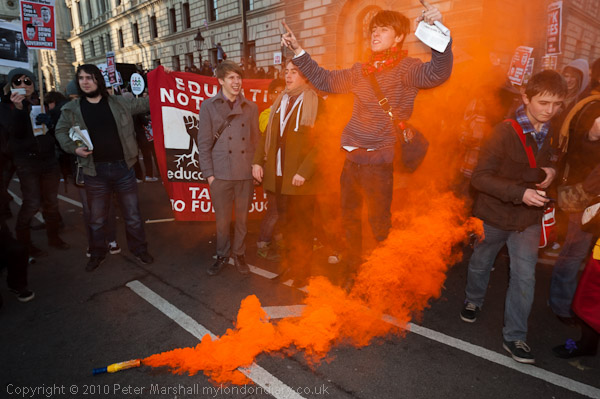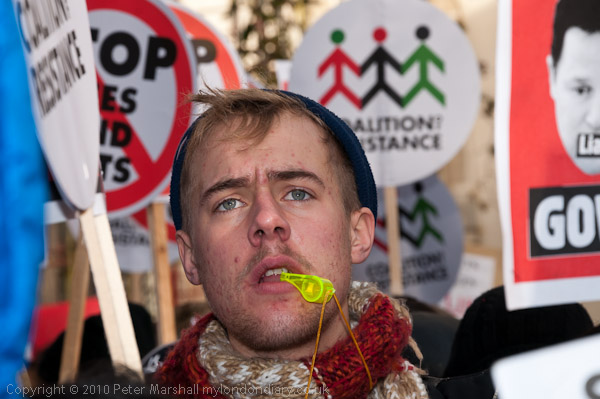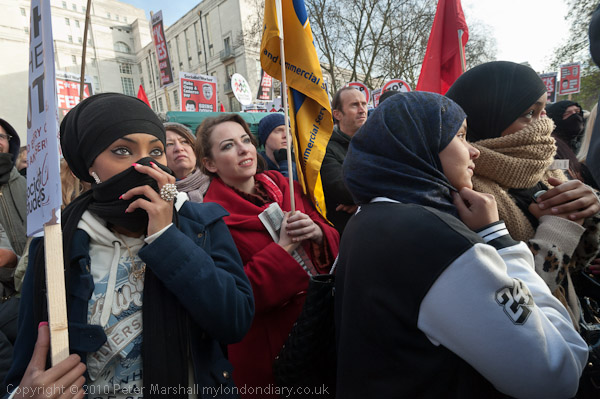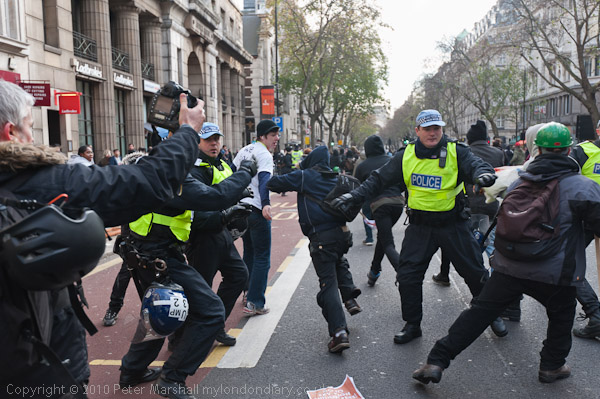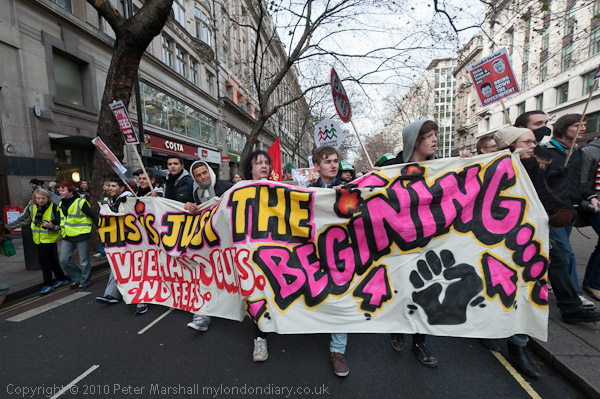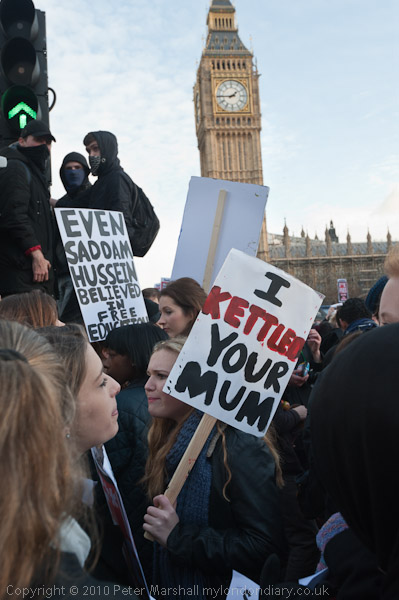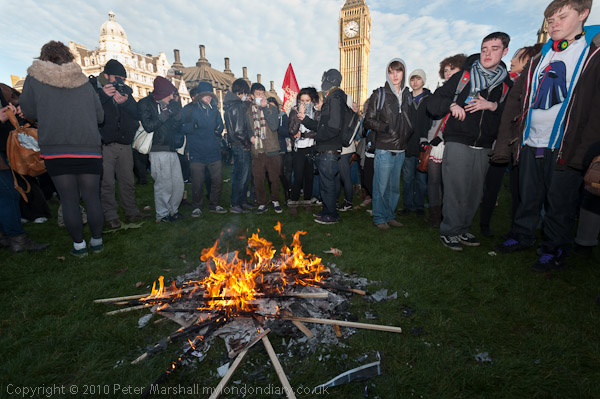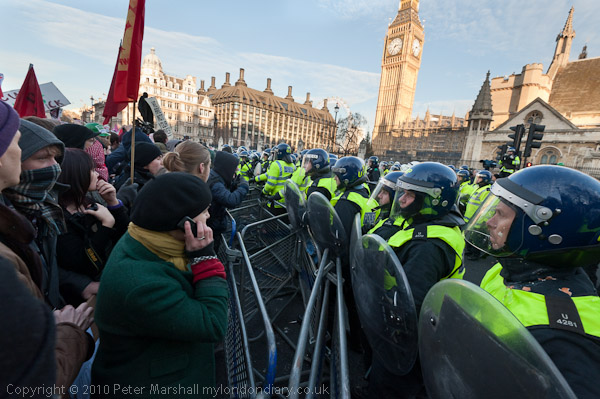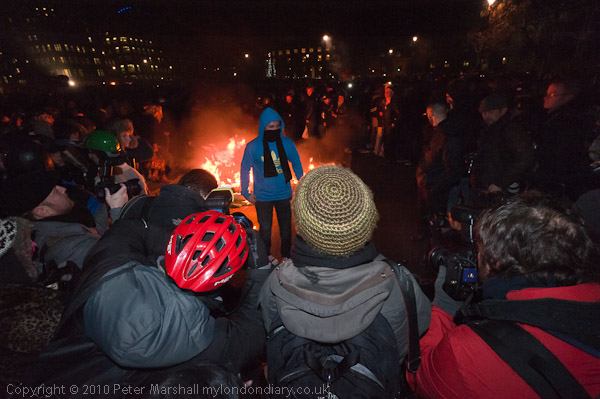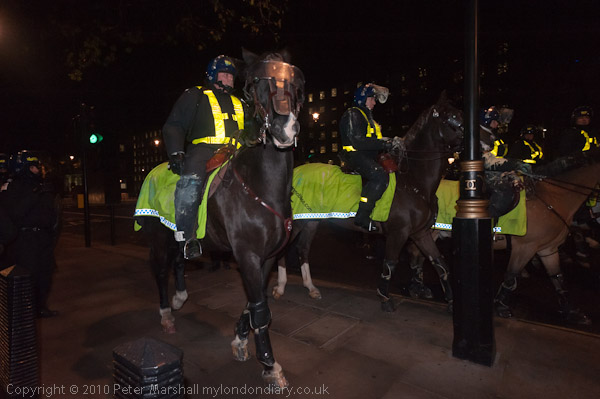National March, Hyde Park to Israeli Embassy, London, Saturday 10 January 2010
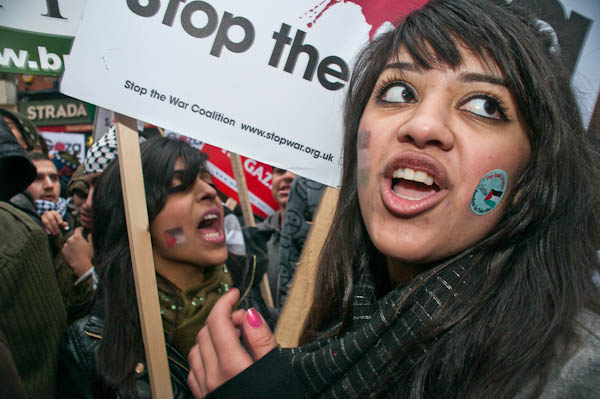
Well over 100,000 marchers turned up to Hyde Park in London on Saturday 10 January 2010 to show their opposition to the Israeli attacks on Gaza and call for an end to the killing there. After a rally there they marched
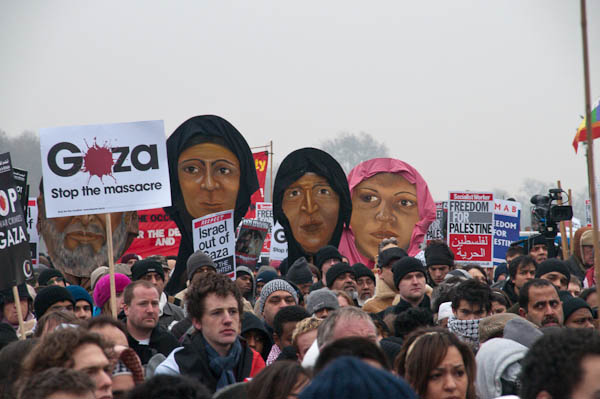
As well as posters and banners, some carried dolls as a reminder of the 300 or so children already killed by the Israeli attacks in the current offensive, the Israeli Operation Cast Lead which had begun on 27th December 2008 and was still continuing.
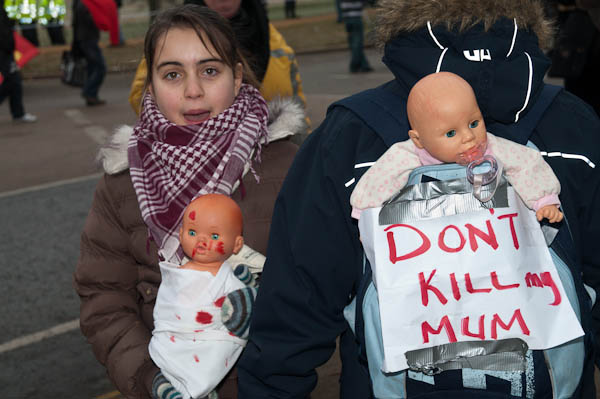
The Gaza Massacre ended with Israel declaring a ceasefire eight days after this protest on 19th January 2009, by which time the Israeli attacks and killed (figures from Wikipedia) between 1,166 and 1,417 Palestinians. There had been 13 Israeli deaths, four of them killed by their own Israeli forces.
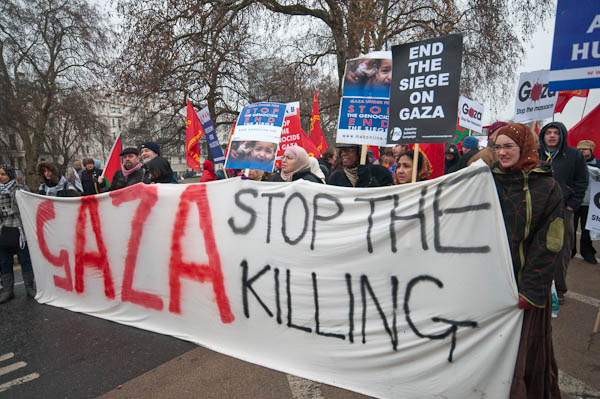
Many children were among the Palestinians killed and some protesters carried dolls or bundles of blood-stained clothing to represent the 300 already known to have died at the time the protest took place. It remains unclear exactly how many civilians were among the killed as Israel allowed few international workers into the area and denied access to journalists. Around a sixth of those killed were police officers in Gaza.
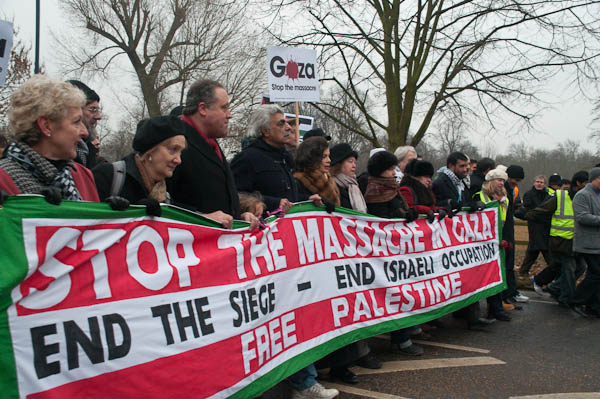
The attacks severely damaged half of Gaza’s hospitals and health facilities. A survey by the United Nations Development Programme estimated that 14,000 homes, 68 government buildings, and 31 non-governmental organisation offices were either totally or partially destroyed. The Israeli blockade on Gaza meant that it was not possible to import the building materials needed for essential repairs and rebuilding.
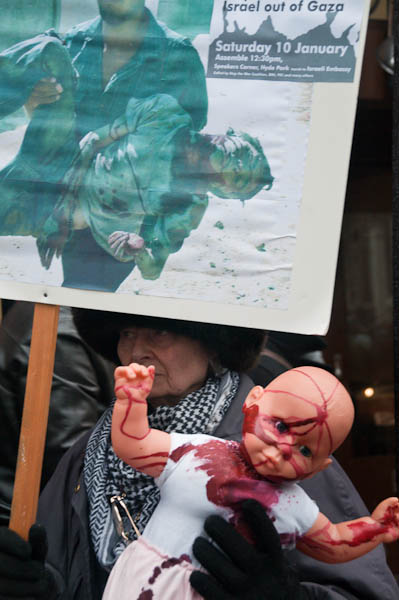
The police had severely under-estimated the likely size of the protest, failing to believe the figures suggested by the march organisers. They had planned for a much smaller protest and this led to problems. Quite rightly, feelings run very high over Gaza and there were many who wanted to get to the Israeli Embassy and make their feelings clear.
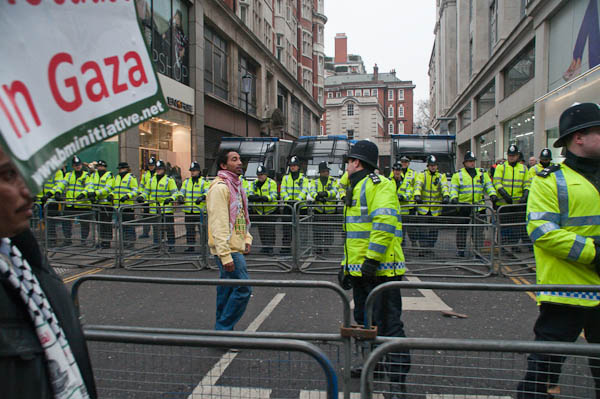
I had no problems with the police, but was assaulted close to the Embassy by several Stop the War stewards some of whom do seem to have a real problem with the press. They pushed me around and tried to stop me from working, although other stewards who who saw what happened did apologise to me for the treatment I received.
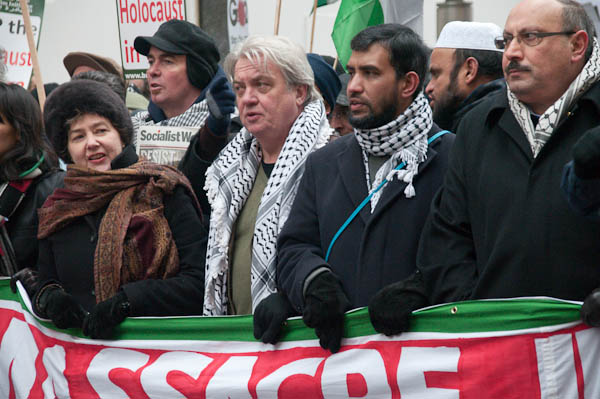
The official front of the march – well behind some of the angrier protesters eventually arrived and paused briefly close to the embassy, safe down a private road behind barriers and police before moving on and dispersing. But many of those on the march remained in the area and the street soon became completely blocked. I could only watch from a distance over the heads of the densely packed crowd as there seemed to be some fighting with police as demonstrators tried to climb the barriers. Placards, sticks and shoes were being thrown either towards the embassy or at the police.
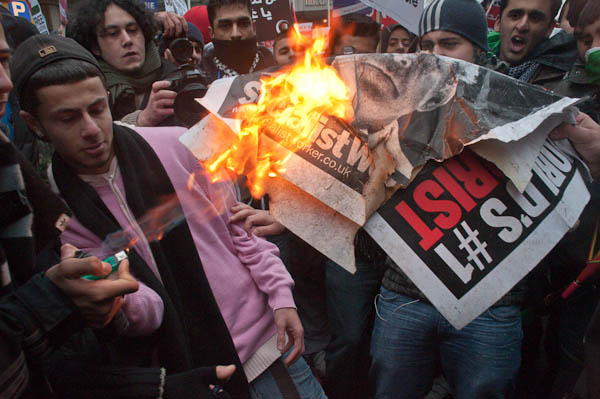
I walked a few yards further down the road where a group of young men burning placards with a picture of the “World’s #1 Terrorist”. A little further still things were much quieter with some Muslim men saying prayers. It looked as if there would be protests here continuing long into the night, but I had to leave as I had promised to take pictures elsewhere at a private event.
Much more at Gaza Massacre – National March.
